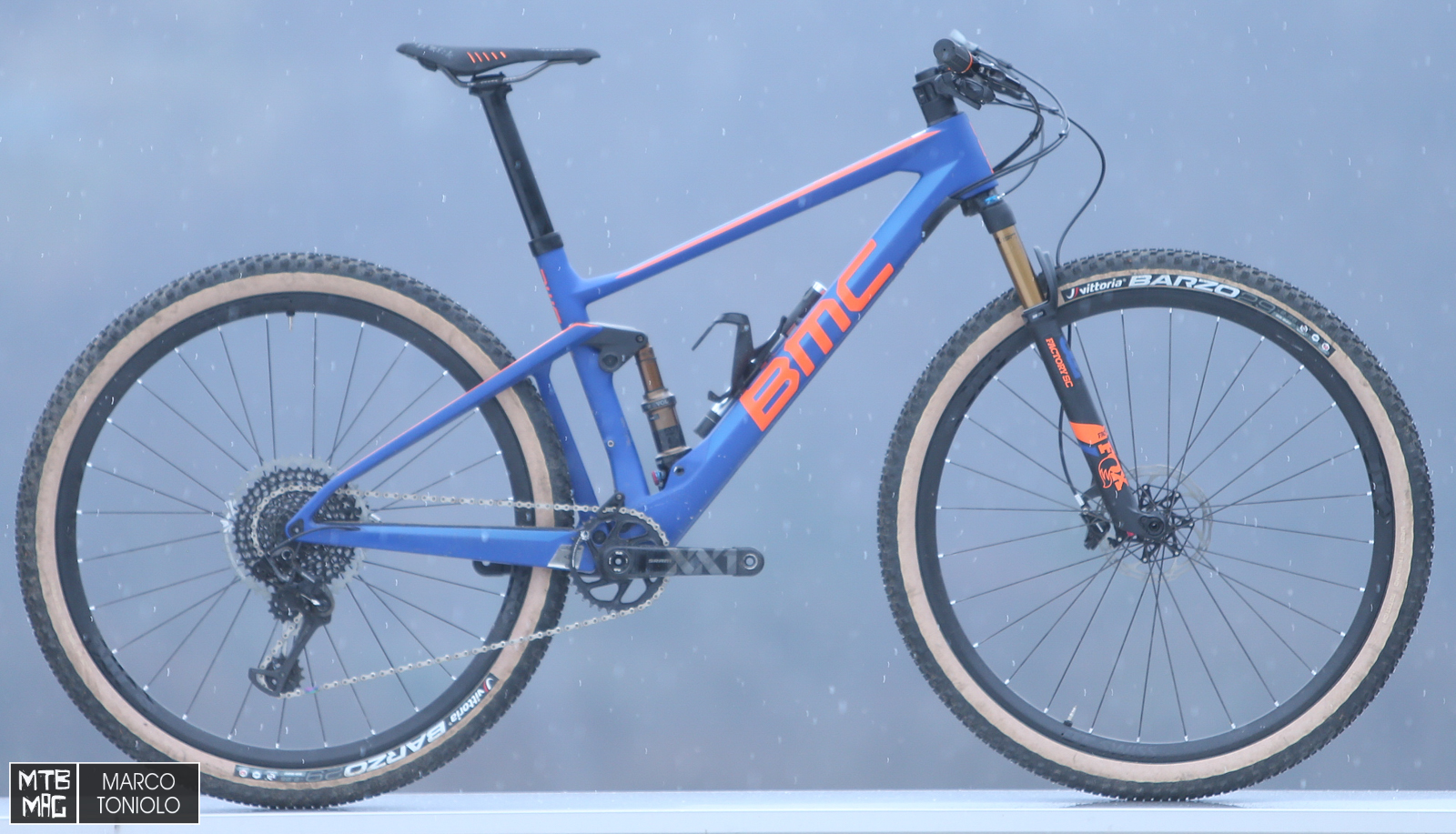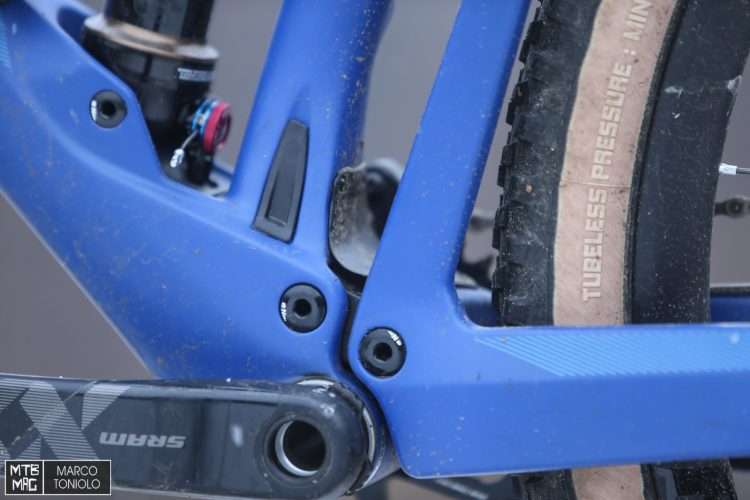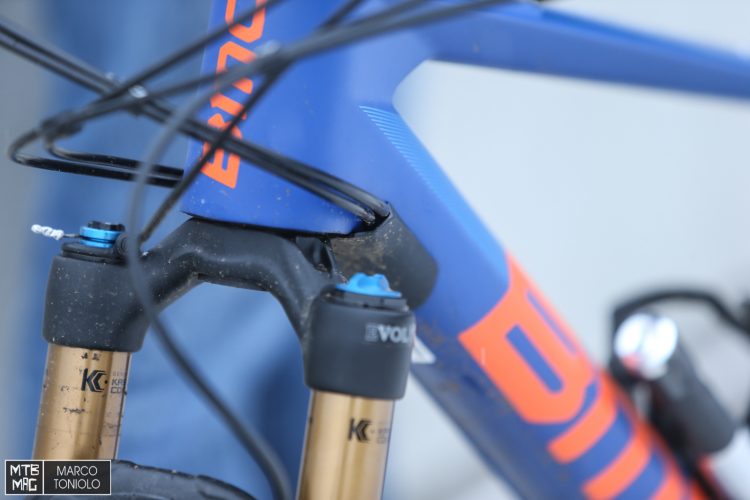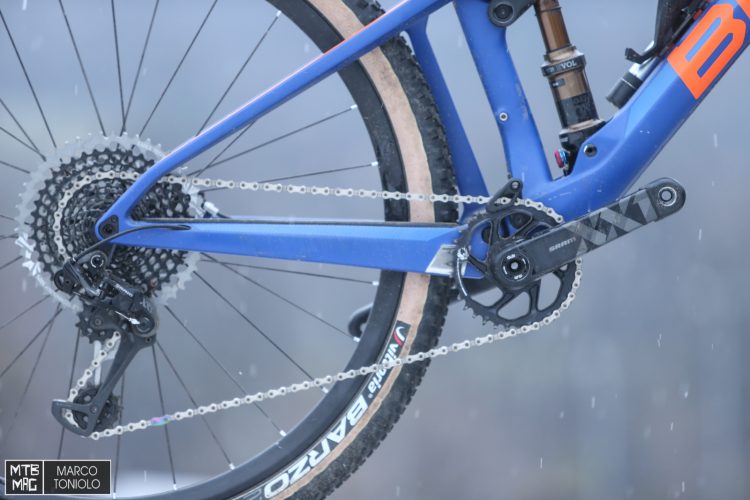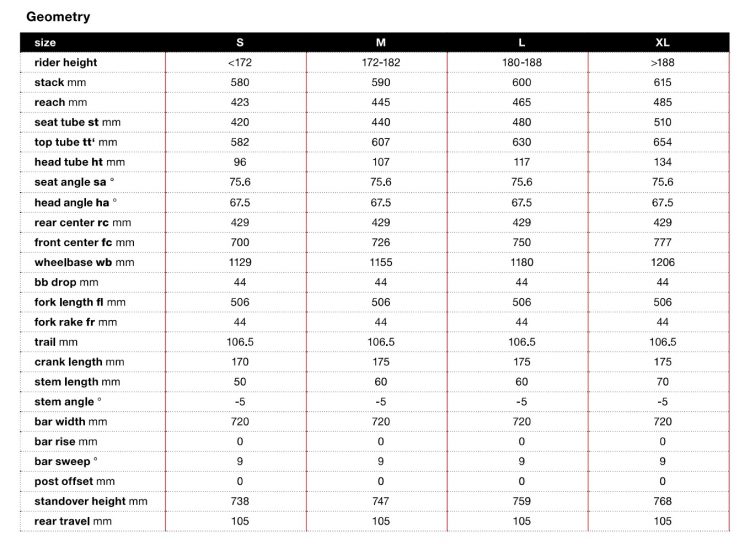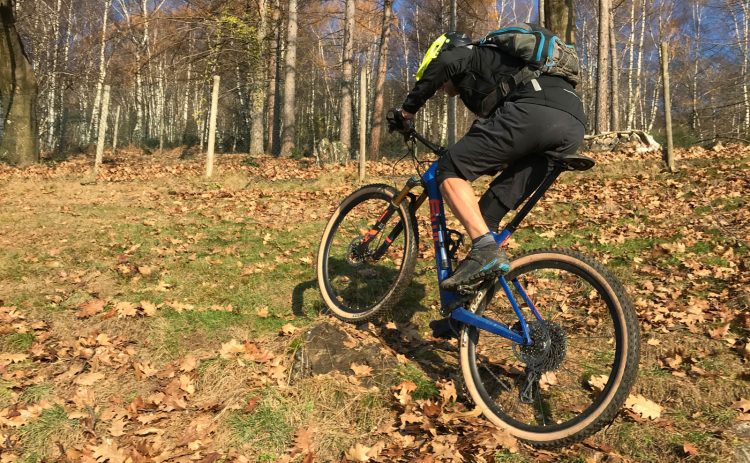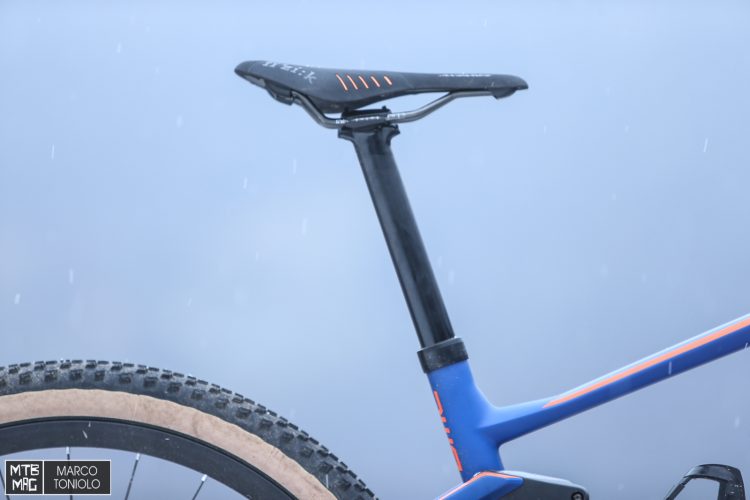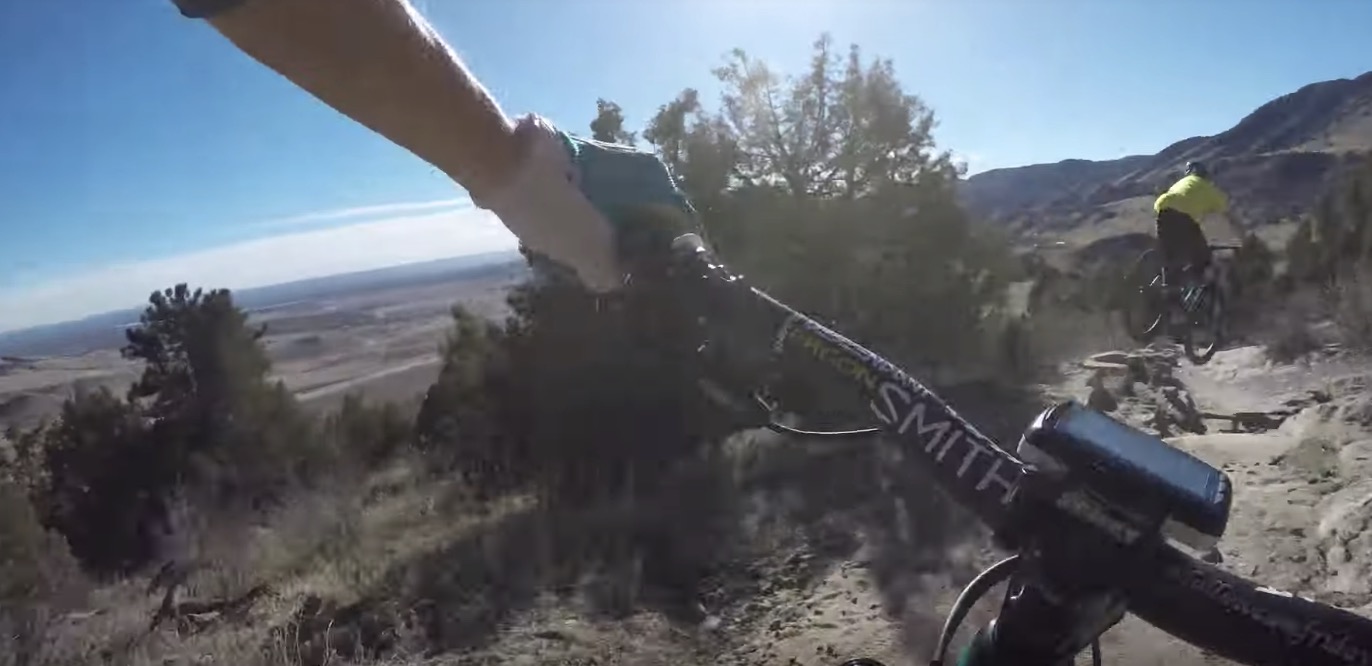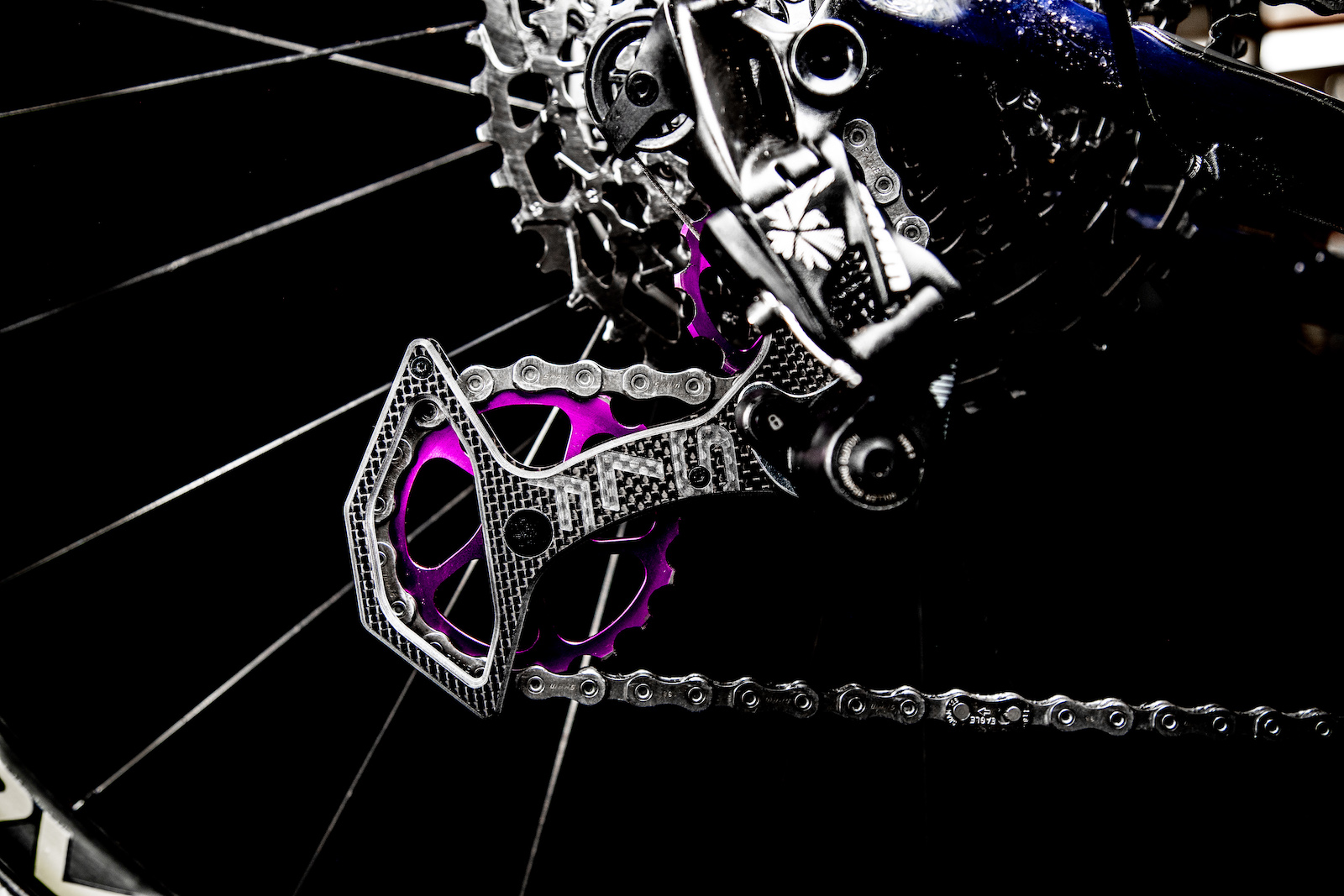BMC presented the new Fourstroke during the MTB World Championships in Lenzerheide. This is the first cross country bike, also used by a leading racing team, with an integrated telescopic seat post. After having been testing this bike for a couple of months, here is our test, both in video and written form.
BMC Fourstroke One Details
- Frame material: carbon fiber
- Wheel size: 29 “
- Sizes available: S, M, L, XL
- Suspension scheme: APS (Advanced Pivot System)
- Adjustable geometries: no
- Front/Rear travel: 100/100 mm
- Boost Spacing: yes
- Metric shock spacing: yes (185x50mm), trunnion mount.
- Tubeless wheels and tires: yes
- Transmission: 1 × 12 with 34T crown / 175 mm cranks
- Front derailleur mount: no
- ISCG mount: no
- Bottle holder: yes
- Frame only availability: yes
- Tested size: M
- Tester height: 179cm. “Horse” (saddle-bottom bracket): 74cm.
- Measured weight (M): 10.43 kg
- Price: 9.999 Euro
Moving down the range is the Two at 7.699 Euros (this version has the Shimano XT instead of the XTR reported on the site because Shimano has not yet delivered the new group 1 × 12, and BMC is waiting for news on this), the Three at 5,999 euros and the frame only with seatpost at 3,999 euros. To see the lineup click here .

Static analysis
29-inch wheels, 100mm of front and rear travel. So far, no departures from the norm. In its genre, however, the new Fourstroke breaks the mold, and not just with its integrated dropper seat post. A look at the geometry makes it immediately clear that we are looking at a more “trail oriented” XC bike, on trend: head angle of 67.5 °, seat angle of 75.6 °, reach of 445mm in size M, fork with offset of 44mm, and a stem that’s “only” 60mm. Finally, a company has the courage to take the bull by the horns and change the patterns.

The frame is completely in carbon, including the linkage, with the square shapes typical of BMC, although less accentuated than in the past and, in my personal opinion, more pleasant to look at. The suspension system is the APS (Advanced Pivot System), a virtual pivot with a very short rear end (429mm), managed by a Fox Float DPS Factory rear shock with a handlebar mounted lockout. Very nice details on the shock mount the lower part of the down tube, as well as of the fender/flap located between the front triangle and the back end. This is an area which is regularly blasted by mud and gravel in the absence of protection.
In the photo above, you’ll also notice the very small distance between the two parts of the bike. The rear triangle is open on the drivetrain side, without an upright.
The RAD telescopic seat post has 80mm of travel and can be adjusted in height in a range of 90mm. The declared weight is 345 grams. Its shape is oval to make it as stable as possible, but it does not have a real collar to keep it in place. Rather, a screw in the lower part of the seat tube. Its shape makes it “irreplaceable” in the sense that you can not mount a seatpost other than this on the new Fourstroke.
It has a bit of lateral play on all sides (see video), but you don’t notice it once you get into the saddle. Its operation is completely mechanical, and the extension speed is regulated by the air pressure. Air that is fed through a valve located under the clamp to secure the saddle.
The maintenance and assembly of the RAD seat post are not as complicated as one might believe, so much so that BMC has prepared a manual for the end customer in this regard, as well as a video.
The remote for the suspension lock is located on the upper left side, since the remote of the dropper seat post is located in the lower part. These are two levers that simultaneously manage the fork and the shock absorber, on three separate positions: lock out, trail and open. The upper lever closes the hydraulics, while the lower one opens it. Not much to look at, also because the lever body is rather bulky, but in terms of ergonomics it is comfortable and easy to use even with winter gloves and the opening lever, in metal like the closing one, does not operate by mistake because its operation is clear and well marked.
If I could, I would remove the remote and put install Live Valve electronic suspension.
The integrated headset series with stopper, ie with handlebar lock to avoid damaging the top tube in the event of a fall, is very well thought out. The internal cable routing, not sleeved, but with generous outlets, makes the assembly of brakes and drivetrain relatively easy.
Regarding the drivetrain, the Fourstroke is only meant for 1x. The 01 features a 1 × 12 Sram Eagle with a 34-tooth front chainring and a minimalist top block chain guide attached directly to the frame.
Being the top of the range 01, we also find carbon wheels, the DT Swiss XRC 1200 Carbon 25 with 25 mm internal diameter, on which were mounted the Vittoria Barzo TR, in 2.25″, both tubeless.
The fork is a Fox 32 SC Factory, which I covered a while back in this test, while the brakes are SRAM Level Ultimate with 160mm discs in front and back.
Geometry
On the trail
Climbing
In theory, with such steep angles, I should have had a bad knee. In practice, I found myself in a position that by now I know well from other bikes with more travel and that I have always appreciated for the ability to overcome the steepest pitches without necessarily having to shift the weight too far forward. Best of all, zero pain, even on long laps. This is combined with the sensitivity of the rear triangle in managing even the small bumps, and the result is excellent traction whose only limitation is from the minimalist tread of the tires, especially in wet conditions, on which I found myself in struggling a bit.
I found the length of the front and rear triangle to be well balanced, because sometimes I happen to find rear ends that are too short compared to the overall length of the bike, which leads to an early lifting of the front.
The suspension lock out is full and firm, which is particularly convenient on the climbs on asphalt and fire roads. The remote control, as mentioned above, is fast and intuitive to operate with the thumb of the left hand: the “click” is crisp in both directions, both the lock and release (look at the video to get an idea). Moving to the intermediate position makes the travel a little longer between open and closed, but it did not create particular problems for me, because one gets used to it quickly.
The width of the BMC MFB 01 carbon handlebar is well thought: with 750mm it adapts well to the aggressive geometry of the Fourstroke and allows you to “pull” well when you go out of the saddle, providing nice leverage. In this regard it must be noted that I did not miss a longer stem because, thanks to the rather abundant reach, I was in an efficient position. The bike has a stem that is very reminiscent of the Newmen one, but with a rebrand from BMC.
Descending
Long reach and a short stem, for XC standards, a slack head angle, wide handlebar and dropper seatpost make this Fourstroke a downhill missile, always taking into account the type of bike, ie a cross country race bike. I can imagine that, changing the tires and then adding a few grams to the scale, the Fourstroke becomes a “light” trail bike that will delight those who use it for riding without the stress of competitions.
The 80mm of travel from the dropper seat post is more than enough for XC use, it might seem too short, but only during the first laps if you are accustomed to the ~120mm travel of most of the droppers in circulation. The functioning of the RAD is that of a mechanical post, therefore less plush and damped than a hydraulic one, that is to say that it goes down very quickly when the lever of the remote control is pressed. In this regard, you must exert a lot of pressure with the thumb on the lever when the rider’s weight is completely resting on the saddle. It is therefore necessary to get up slightly to unlock the mechanism. The RAD in test leaked air, probably due to a defective seal, so it was necessary to pump air in the chamber before each ride since the problem occurred.
I know the SRAM Level Ultimate RSC brakes because I used them on other XC bikes and I have to say that they did not disappoint me: despite the 160mm diameter discs in front and back, braking power was always sufficient and above all consistent. I did not ride big alpine descents during the test, given the season, but I can imagine that for XC and granfondo use they do their job well. I weigh 70 kg without gear, for information.
The DT Swiss XRC 1200 Carbon 25 wheels in this configuration weigh in at 1450 grams. It will not be the record weight that some gram counting maniacs are looking for, but they are reliable, have very smooth and light hubs (240s) and a freewheel with 54 points of engagement through the proven Star Ratchet system that is on all the wheels from the Swiss brand. Their rigidity is not a bother, in the sense that it does not transmit all the vibrations from the ground to the rider’s body, differentiating itself from a rim like that of the Enve, for example. With tires like the Vittoria Barzo 2.25″, it is easy to accelerate and, while in the downhills they proved to be precise and easy to hold a line on. Regarding the tires, as previously mentioned, they show their limits in the wet but also on the loose dirt, where traction leaves something to be desired. On the other hand, I did not have a single flat during the whole test.
Finally, the Fox 32 SC fork is also worth a few lines. In competitive environments circulates the urban legend that is not very rigid and precise, while the Rock Shox SID would be much better from this point of view. Having tried them both on different bikes, I can confirm that this is only legend. Both forks are very light (within the 1300/1400 grams) and have excellent hydraulics inherited from their bigger sisters. You can not expect the rigidity of a Lyrik or a 36 with 600 grams less weight, rather, given the intended use, they do the job very well and I’ve never found myself offline either with one or the other. We are talking about bikes and components stripped bare to keep the weight down, so it is necessary to remember to relativize everything to the intended use.
Conclusions
The new BMC Fourstroke was designed for the increasingly technical tracks of the XC World Cup, becoming a more versatile bike than one might believe when looking at the fact that it has “only” 100mm of travel. With a geometry way ahead of the curve in this segment, the element that stands out most is the integrated dropper seat post. If on one hand you may not like it because it is not replaceable with a classic because of its oval shape, on the other hand it becomes an indispensable component if you love technical trails and especially if you want to have fun downhill. In short, the Fourstroke is not only a racing bike for tough tracks, but also a great way to raise the bar of your technical skills without penalizing the performance uphill.

